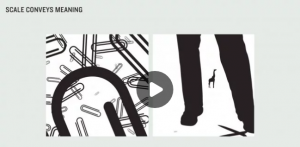This year I’ve taken some fantastic courses and I’m really excited to take something else. I’m not exactly sure I know what to sign up for — but I do want to be as excited for the new course as I have been for my previous courses.
I scribbled down this little short list of courses and it’s been sitting on my desk for weeks. I’m going to share them here so I can throw away this paper.
Even though I make these lists, I still end up taking courses that aren’t listed. I see something interesting and watch one video, and then end up in the whole course! For instance, I came across multiple courses on Islam, a business “MicroMasters” series from Bangalore, India, and two courses from Harvard. One on rhetoric and another on money and ethics. So, who know what I’ll get into. Actually, I’m already taking 2 other courses right now.
Most of the courses below have a preview video, so I’m including it.
Psychology of Activism: Women Changing the World
Smith College – SmithX
Learn what motivates prominent women such as Gloria Steinem, Loretta Ross, and others to become involved in activism in this political psychology course.
https://www.edx.org/course/psychology-of-political-activism-women-changing-th
For obvious reasons this year, I thought this might be a good course to consider.
Intercultural Competency in Education
University of Iceland – UIcelandX
Do you want to learn practical skills to become interculturally competent and aware as an educator? Take this course and learn to develop strategies to deal with identities in a fairer and more coherent way.
https://www.edx.org/course/intercultural-competency-in-education
After I took that Gender and Intersectionality course, I thought this might be another course to become more informed about intercultural issues. It’s actually more of a course for educators, but you never know when you’ll have the opportunity to teach something new.
I’m not surprised the University of Iceland has a course like this. The more I learn about Iceland, the more impressed I become!
Women Have Always Worked, XSeries Program
Columbia University – COLUMBIAX
Explore the history of women in America.
https://www.edx.org/xseries/columbiax-women-have-always-worked
This is a 4-course series. These XSeries of courses are meant to provide a deep exploration of a topic. They’re really a semester or a full year’s worth of education. Each individual course is broken up into like 8-10 weeks sections, so it’s pretty substantial. EdX estimated 10 months to complete all four courses, but if it’s your only course and you’re not doing anything else, you could get through it much faster.
The Medieval Iceland Sagas
University of Iceland – UIcelandX
Learn about the Icelandic Sagas, the characteristic literary genre of Medieval Iceland comprising roughly 40 texts.

https://www.edx.org/course/the-medieval-icelandic-sagas-2
I’ve put this one on a short list because Icelandic sagas came up during the Gender and Intersectionality course I took. And, I’ve decided to take as many courses from the University of Iceland as possible. (There are only 6.)
World History of Wine
Trinity College – TrinityX
Explore wine through the eyes of a historian, as you learn about the “old” and “new” worlds of wine, including how its taste and quality has changed over time.
https://www.edx.org/course/the-world-history-of-modern-wine
I read a book earlier this year about world history through 6 drinks: wine, coffee, tea, spirits, beer, and cola. This seems like kind of the same thing, but specifically using wine.
World of Wine: From Grape to Glass
University of adelaide – adelaidex
Learn about the principles and practices of how grapes are grown and wine is made. Whether you’re a wine novice or a seasoned oenophile, you’ll learn to confidently describe wine appearance, aroma, flavour and taste.
https://www.edx.org/course/world-of-wine-from-grape-to-glass
A few years ago, I started learning more about wine. I thought this might be a great course to learn more.
Science of Beer
Wageningen University and Research – WageningenX
Are you interested in more than just the taste of beer? Discover what’s in your beer, how it’s made and marketed and the effect it has on your body and health.
https://www.edx.org/course/the-science-of-beer
Beer is so common, yet hardly discussed seriously. This course seemed like a good opportunity for that.







